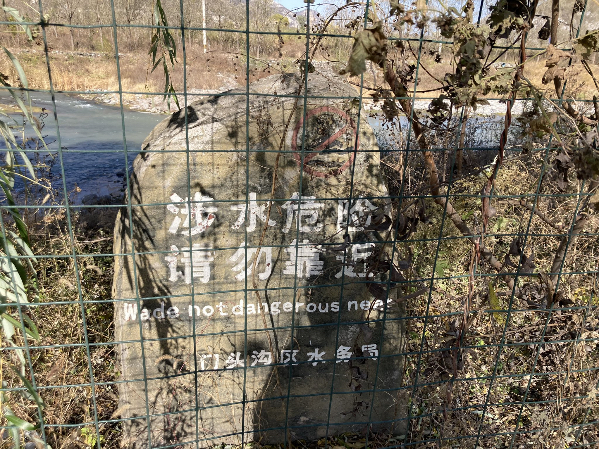Historical Chinese pronunciations in a new video game
[This is a guest post by Lizhou Sha]
As a long-time reader and fan of Language Log, I'd like to call your attention to an unusual appearance of reconstructed historical Chinese pronunciations in the newly released Age of Empires IV, the latest of a popular real-time strategy (RTX) game series by Microsoft. I found an excellent YouTube video by a player named Der Rote where he systematically featured the voiceover lines of the Chinese units and did an excellent job rendering them into modern Mandarin:
Read the rest of this entry »
Preserving Taiwanese
Article by Rhoda Kwan, Hong Kong Free Press (31/10/21):
‘The loss of language is the loss of heritage:’ the push to revive Taiwanese in Taiwan
"You can't completely express Taiwanese culture with Mandarin – something is bound to be lost in translation," says one advocate for the local language.
When I go to Taipei, I seldom hear Taiwanese being spoken, especially by people under forty or fifty. That is always saddening to me, especially considering the fact that about 70% of the total population of Taiwan today are Hoklos.
…
The rare usage of Taiwanese, particularly on the streets of its capital Taipei, is a legacy of decades of colonial rule. During 50 years under Japanese rule, and the Kuomintang’s subsequent martial law from 1949 to 1987, generations of Taiwanese were banned from speaking their mother tongue in public.
“A whole generation’s learning in this language was washed away, and with this language a culture and identity was also washed away,” said Lí Sì–goe̍h, a Taiwanese language advocate.
Before the arrival of the Kuomintang, Taiwanese – a language from China’s Fujian province also referred to as Taigí, Taiwanese Hokkien, Hoklo or Southern Min – was spoken by most Han immigrants who arrived on the island from the 17th century onwards. Other languages, including other Chinese languages such as Hakka and dozens of different Austronesian indigenous languages, were also spoken on the island, a reflection of the diversity of ethnic groups that have lived on the island for centuries.
Read the rest of this entry »
rime-cantonese, a Cantonese lexicon for building keyboards and more
The following is a guest post by Mingfei Lau. A short intro about the author:
My name is Mingfei Lau, a member of The Linguistic Society of Hong Kong Jyutping Workgroup. I am a language engineer at Amazon and I work on different projects on Cantonese resource development in my spare time.
Today, Pinyin is undoubtedly the most popular way to type Mandarin. But what about Cantonese? This wasn’t easy until rime-cantonese, the normalized Cantonese Jyutping[1] lexicon appeared. Lo and behold, you can now type Cantonese in Jyutping just like typing Mandarin in Pinyin.
Read the rest of this entry »
Another early Sinitic disyllabic morpheme: "(unopened) lotus blossom"
I take great pleasure in finding morphemes in early Sinitic that are disyllabic, i.e., neither syllable of which means anything by itself, but acquires meaning only in combination with another morpheme to which it is customarily linked. I have found hundreds of ancient terms composed of such morphemes and have written about many of them on Language Log ("grape", "coral", "lion", "reindeer", "macaque", "earthworm", "spider", "phoenix", "sinuous, winding", "awkward", "knot", "pimple", "balloon lute", "harp", and so on and so forth).
There are two main reasons why I pay particular attention to such disyllabic morphemes:
1. Their numerousness certifies that early Sinitic was not exclusively monosyllabic (a widespread misconception), if we go by its Sinographic form in the latter part of the first millennium BC.
2. Many of these disyllabic morphemes have cognates (i.e., originate) in non-Sinitic languages (e.g., Iranian, Tocharian), which shows that Sinitic language (and culture) did not develop in isolation, but evolved in close association with other languages and cultures.
Read the rest of this entry »
Massive long-term data storage
News release in EurekAlert, Optica (10/28/21):
"High-speed laser writing method could pack 500 terabytes of data into CD-sized glass disc: Advances make high-density, 5D optical storage practical for long-term data archiving"
Caption
Researchers developed a new fast and energy-efficient laser-writing method for producing nanostructures in silica glass. They used the method to record 6 GB data in a one-inch silica glass sample. The four squares pictured each measure just 8.8 X 8.8 mm. They also used the laser-writing method to write the university logo and mark on the glass.
Credit
Yuhao Lei and Peter G. Kazansky, University of Southampton
Read the rest of this entry »
Mixed Mandarin-Taiwanese-Japanese orthography
Difficult languages and easy languages, part 3
There may well be a dogma out there stating that all languages are equally complex, but I don't believe it, especially not if it has to be "drummed" into our minds. I have learned many languages. Some of them are exceedingly hard (because of their complexity) and some of them are relatively easy (because they are comparatively simple). I have often said that Mandarin is the easiest language I ever learned to speak, but the hardest to read and write in characters (though very easy in Romanization). And remember these posts:
"Difficult languages and easy languages" (3/4/17)
"Difficult languages and easy languages, part 2" (5/28/19)
Read the rest of this entry »
"Let's go Brandon!"
ICYMI: Heather Schwedel, "The Story Behind “Let’s Go Brandon,” the Secretly Vulgar Chant Suddenly Beloved by Republicans", Slate 10/22/2021:
On Thursday, Rep. Bill Posey, a Republican from Florida, ended a speech on the House floor with a curious exclamation: “Let’s go, Brandon!”
Let’s go who now?
Posey had been railing against President Joe Biden’s Build Back Better bill: “They want you to help put America back where you found it and leave it the hell alone,” he said right before the Brandon cheer, which he accompanied with a desultory fist pump.
The expression coming from a sitting member of Congress caused a bit of a stir online. Why? Who’s this Brandon character and what does he have to do with building back, or not building back, America? The simple answer is that he’s a race car driver—but it’s a long story, and who Brandon is actually matters less than what the phrase “Let’s go, Brandon!” means. It’s a euphemism—and its direct translation is “Fuck Joe Biden.”
Read the rest of this entry »
Sino-Japanese aesthetics and a new mode of translation
[This is a guest post by Ashley Liu]
The following is a new way to translate classical Chinese poetry into Japanese. Recently, some Chinese shows about premodern China have become popular in Japan. The Chinese songs in the shows–written in classical Chinese poetry style–are translated into Japanese and sung by Japanese singers. I am fascinated by how the translation works. As you can see below, the Japanese version has waka aesthetics but keeps the 7-syllable format of Chinese poetry. The Japanese version seems to reduce the original meaning by a lot, but if you read it carefully, the way it captures the core meaning is ingenious, e.g., 風中憶當初 (remembering the past in the wind) = 時渡る風 (wind that crosses through time / brings back time).
Read the rest of this entry »
Ask Language Log: "England's death bowling superhero"?
RW writes "I'm English and have some understanding of cricket, but this one has got me beaten!"
He's referring to a Halloween-y headline: Barney Ronay, "Tymal Mills answers bat signal to be England's death bowling superhero", The Guardian 10/27/2021.
The syntax of that headline is fairly straightforward. And presumably RW can decode the literary reference involved in answering a bat signal, despite the referential overlap between willow-wood blades and mammals of the order Chiroptera. So the puzzle is, what's "death bowling"?
Read the rest of this entry »
The implications of Chinese for AI development, part 2
With this post, we are already acquainted with Inspur's Yuan 1.0, "one of the most advanced deep learning language models that can generate coherent Chinese texts." Now, with the present article, we will delve more deeply into the potentials and pitfalls of Inspur's deep learning language model:
"Inspur unveils GPT-3 equivalent for Chinese language", by Wei Sheng, TechNode (1026/21)
The model is trained with 245.7 billion parameters—the number of weights in an artificial neural network, according to the company. This is more than the Elon Musk-backed GPT-3 language model for English, which has 175 billion parameters. Inspur said the Yuan model was trained with 5 terabytes of datasets.
…
Read the rest of this entry »



